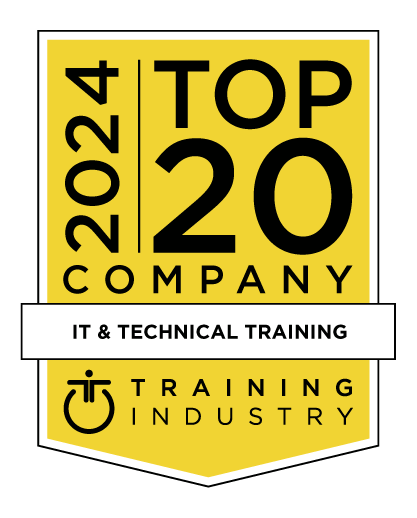title
Please take a moment to fill out this form. We will get back to you as soon as possible.
All fields marked with an asterisk (*) are mandatory.
Collaboration Communications Systems Engineer (MS-721T00)
Course Description
Overview
Participants should understand the fundamentals of networking, telecommunications, audio/visual and meeting room technologies, identity and access management, and Microsoft Teams.
Objectives
Students will learn to,
- Introduction to Teams meetings and calling
- Plan for Teams Phone
- Plan for Microsoft Teams Rooms and Surface Hub
- Plan and optimize network performance for Teams media
- Configure and deploy Teams Phone
- Configure and deploy Teams Phone with Direct Routing
- Extend Teams Phone with additional services
- Manage meetings and events experiences
- Guided project - Create and assign Teams policies to meet business requirements in Microsoft Teams
- Configure and manage voice users
- Configure auto attendants and call queues
- Configure, deploy, and manage Teams devices
- Guided project - Prepare meeting room experiences
- Monitor and troubleshoot Teams collaboration communications systems
Audience
Collaboration Communications Systems Engineers are responsible for planning, deploying, configuring, maintaining, and troubleshooting Microsoft Teams Phone, meetings, and personal and shared space devices, including Microsoft Teams Rooms and Surface Hub.
Collaboration Communications Systems Engineers have a fundamental understanding of networking, telecommunications, audio/visual and meeting room technologies, identity and access management.
They are proficient in managing and monitoring Teams Phone, meetings, and certified devices using the Microsoft Teams admin center, PowerShell, the Microsoft Teams Rooms Pro Portal, and the Call Quality Dashboard. They deploy and configure Microsoft Teams Phone with PSTN connectivity through Microsoft Calling Plans, Operator Connect, Teams Phone Mobile, and Direct Routing.
Collaboration Communications Systems Engineers work with Teams Administrators, Microsoft Identity and Access Administrators, and Microsoft 365 Administrators. In addition, they may work with owners of other workloads, including facilities managers, network engineers, security engineers, device manufacturers, telephony providers, and Microsoft Certified solutions providers.
Prerequisites
- Microsoft 365 and Microsoft Teams
- Networking, telecommunications, and audio/visual basics
- Identity and access management basics
Before attending this course, students should have general knowledge of the following topics:
Topics
Module 1: Introduction to Teams meetings and calling
- Describe Teams meetings and events
- Describe Teams Phone
- Describe auto attendants and call queues
- Describe Microsoft Teams Rooms, Teams meeting room devices, and Teams phones
Module 2: Plan for Teams Phone
- Plan for a basic Teams Phone deployment.
- Plan for advanced Teams Phone calling options.
- Plan for Teams phones and devices.
Module 3: Plan for Microsoft Teams Rooms and Surface Hub
- Understand the main differences of Microsoft Teams Room for Android and Microsoft Teams Rooms for Windows
- Explain which accessories, components and peripherals are mandatory
- Understand the advantage of Surface Hub
- Understand the difference between the licensing options
- Plan and review a physical room layout
Module 4: Plan and optimize network performance for Teams media
- Describe Teams network requirements
- Evaluate organizational bandwidth requirements with the Teams Network planner
- Assess network using the Teams Network Assessment Tool
- Optimize network and WiFi for media flow
- Optimize media flow with QoS
Module 5: Configure and deploy Teams Phone
- Configure emergency calling addresses
- Manage Microsoft Calling Plan numbers
- Setup and manage Operator Connect and Teams Phone Mobile
- Understand Teams Phone policies and configuration options
- Configure Audio Conferencing and Communication Credits
Module 6: Configure and deploy Teams Phone with Direct Routing
- Explain how to configure and connect a Session Border Controller (SBC).
- Describe the process for configuring simple and advanced voice routing.
- Describe how to provision users, implement number translation, create, and assign dial plans.
- Explain how to configure and connect a Survivable Branch Appliance (SBA).
Module 7: Extend Teams Phone with additional services
- Describe how Teams Phone interacts with other Microsoft services.
- Configure and integrate third-party policy-based compliance recording.
- Configure and integrate third-party contact center solutions.
- Design and register Voice Bots for custom developed solutions.
Module 8: Manage meetings and events experiences
- Understand meetings and events in Microsoft Teams
- Set up conference bridges
- Manage meeting policies
- Configure meeting settings
- Manage Live events policies
- Configure Live events settings
- Explain Live events in Microsoft 365
Module 9: Guided project - Create and assign Teams policies to meet business requirements in Microsoft Teams
- Create a security group
- Create and assign a messaging policy in the Teams admin center
- Create a meeting policy in Teams admin center and assign it with PowerShell
Module 10: Configure and manage voice users
- Enable users for Teams Phone using Calling Plans, and Teams Phone Mobile or Operator Connect if it's configured for your tenant.
- Enable users for Direct Routing.
- Manage per-user options for Teams Phone.
Module 11: Configure auto attendants and call queues
- Describe the differences between auto attendants and call queues.
- Design an auto attendant to gather information from callers.
- Explain how to set up auto attendants to implement your plan.
- Demonstrate how to plan call queues to manage many callers.
- Describe how to configure call queues to alert agents and route calls.
- Explain how to plan licensing for auto attendants and call queues.
Module 12: Configure, deploy, and manage Teams devices
- Understand scenarios for using Teams phones, Teams displays, and Microsoft Teams Rooms with voice services.
- Differentiate between the different options for deployment and management of devices.
- Deploy Teams phones and Teams displays.
- Configure Teams Phone for Microsoft Teams Rooms.
- Manage Teams devices in the Teams admin center and Teams Rooms Pro Management Portal.
Module 13: Guided project - Prepare meeting room experiences
- Prepare the Microsoft 365 tenant for Microsoft Teams Rooms deployment
- Create dynamic groups following best practice
- Disable multi-factor authentication for Microsoft Teams Rooms resource accounts
- Configure room mailbox properties
Module 14: Monitor and troubleshoot Teams collaboration communications systems
- Diagnose and troubleshoot phone number assignment
- Diagnose and troubleshoot Microsoft Teams client issues
- Diagnose and troubleshoot call failures and quality issues
- Report on and troubleshoot Teams calls with the Call Quality Dashboard (CQD)
- Diagnose and troubleshoot Direct Routing issues
- Troubleshoot and monitor Teams devices using the Teams Rooms Pro portal
Self-Paced Training Info
Learn at your own pace with anytime, anywhere training
- Same in-demand topics as instructor-led public and private classes.
- Standalone learning or supplemental reinforcement.
- e-Learning content varies by course and technology.
- View the Self-Paced version of this outline and what is included in the SPVC course.
- Learn more about e-Learning
Course Added To Shopping Cart
bla
bla
bla
bla
bla
bla
Self-Paced Training Terms & Conditions
Exam Terms & Conditions
Sorry, there are no classes that meet your criteria.
Please contact us to schedule a class.

STOP! Before You Leave
Save 0% on this course!
Take advantage of our online-only offer & save 0% on any course !
Promo Code skip0 will be applied to your registration
Purchase Information
title
Please take a moment to fill out this form. We will get back to you as soon as possible.
All fields marked with an asterisk (*) are mandatory.










